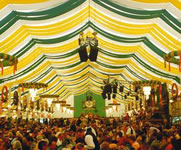Lots of companies that manufacture branded goods have their own factory outlet on site. The range includes porcelain, crystal, high-street fashion, designer fashion, household goods, shoes and much more. The goods are usually end-of-season overstocks and shoppers can save 25% to 50%, or sometimes even more.
It's a good idea to make sure you have an accurate map. The manufacturers' sales outlets are often out of town, or located in industrial parks. Generally, the only forms of payment accepted are cash or EC cards, and goods cannot be exchanged or returned. The precise addresses are listed in bargain-hunters' guides ("Schnäppchenführer") which are available from book shops.
Designer outlet centres have several different stores selling last season's collections, end-of-range lines, seconds and overstocks at prices between 10 and 70 per cent off. These centres are usually located in industrial parks located within easy reach of several major towns and cities.






